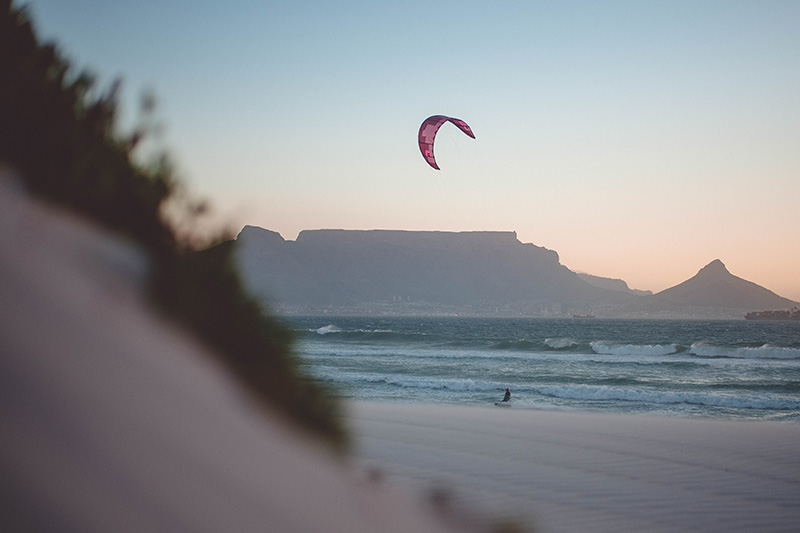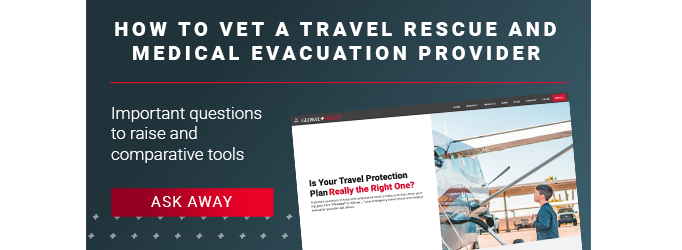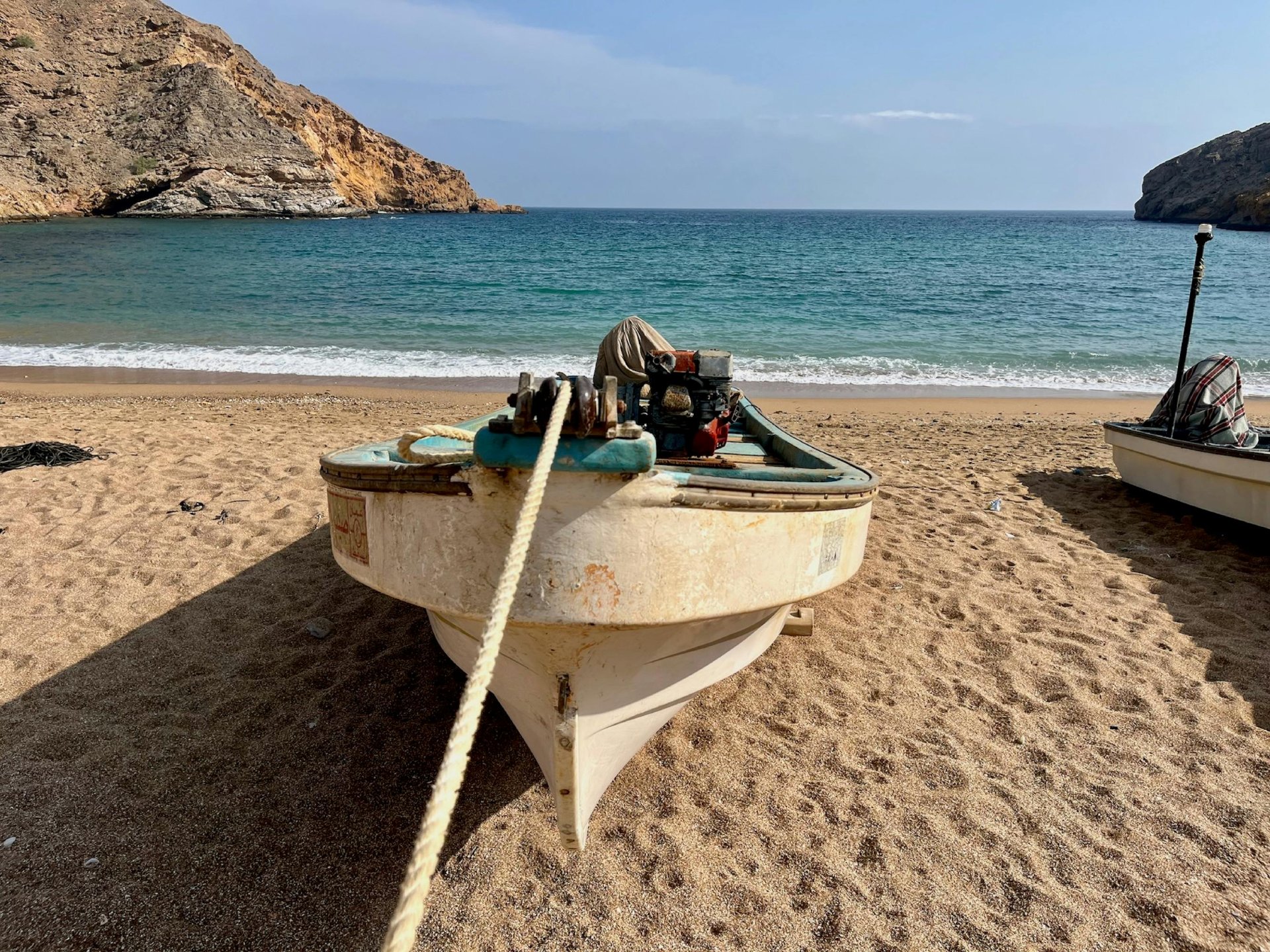This post is part of the Global Rescue “No Restrictions” series, where we take a look at extreme sports and activities that many of our members have taken part in — or plan to. Unlike other providers, Global Rescue memberships do not exclude or restrict adventure activities, whether cave diving, sky diving, cross country paragliding, heli-skiing, BASE jumping and beyond.
Picture yourself scudding along the ocean surf atop a half-sized board while being pulled by a wing-like parachute powered by nature’s breezes. Lean back on your heels against the wind for a classic edging move and feel the salty spray on your face. Change your angle a bit and boost a huge jump into the air. Sound like fun? Welcome to kiteboarding, an extreme sport that’s not so extreme anymore.
Kiteboarding, or kitesurfing, is a sport where the wing-like parachute, called a kite, uses wind power to propel people on the water. It meshes features of paragliding, surfing, windsurfing, skateboarding, snowboarding and wakeboarding.
There are many places, like the Squamish Spit in British Columbia, where the wind, water, and land combine for perfect conditions for beginners and experts, according to Skyblue Overland, a Global Rescue Smart Travel Partner. The Spit is a narrow strip of land located where the Squamish River flows into Howe Sound.
What makes the sport special, according to Dan Grains, the owner and founder of Squamish Water Sports in British Columbia, Canada, is the “attraction to a sport that is freedom on the water without the need for motorized power.”
Safety Improvements Help Grow the Sport
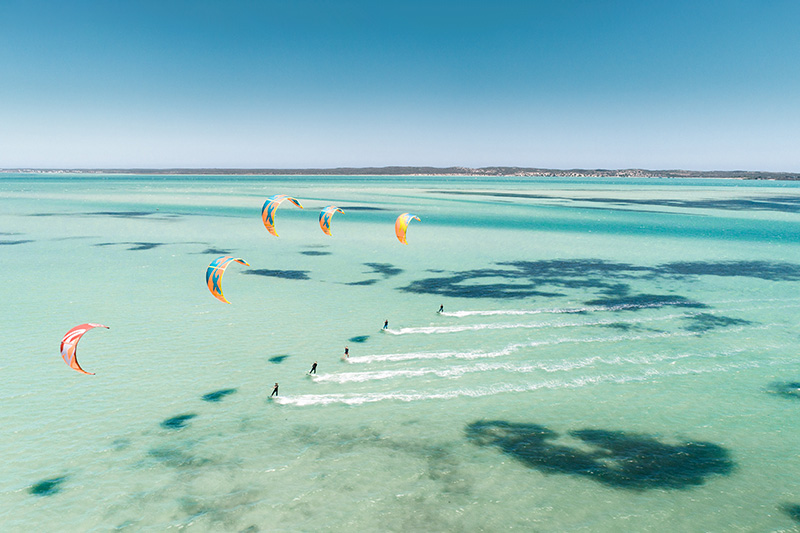
Today, there are more than a million and a half kiteboarders, and the sport is growing quickly. In the early days of kiteboarding, the safety elements hadn’t been perfected and most participants were younger athletes looking for radical activities.
Newcomers to the sport are increasingly older and female. Grains agrees the sport changed.
“Kiteboarding was originally considered an extreme sport and typically only accessible to the gladiator-type sports enthusiast. But with advances in equipment, technology and safety mechanisms, the sport has become more accessible to people who may be less athletic or have fewer opportunities to be active outdoors,” he said.
Global Rescue member Jim Larkins is already looking to join the kiteboarding community. “I’m a longtime water skier, which can be a physically demanding sport. As I’m aging, I keep an eye out for other similar activities that may be less demanding. I think kiteboarding may fit that bill in the future,” he said.
Lower Physical Demands
Kiteboarding may be considered an extreme sport, but it is not as physically demanding as some may think. The kite pulls up on the rider, not horizontally like water skiing, so it’s easier on your knees, Grains explained. “There are a variety of kiteboard options that minimize the shock on your legs, including the hydrofoil board that contributes zero impact on your knees,” he said.
[Related Reading:
Will Bleisure Travel Save Business Travel?]
Unusual hand and arm strength aren’t needed with kiteboarding either because the kite’s power pulls you through a harness attached to your hips or waist while your hands use the kiteboarding control bar for maneuvering, Grains explained. The control bar attaches to the kite via the lines. The rider holds on to this bar and controls the kite by pulling at its ends, causing the kite to rotate clockwise or counterclockwise.
“This is different from waterskiing or wakeboarding where all the pulling power is going directly going to your hands that are holding the handle connected to the bridle and tow rope.”
Entry-Level Equipment and Basic Skills
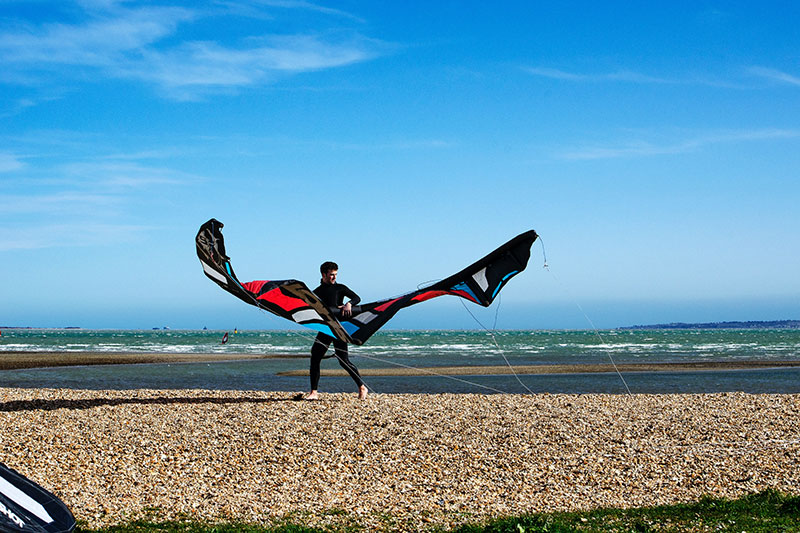
Kiteboarding can seem expensive, especially when you learn the equipment needed includes: a special kite (usually about 23-59 square feet/7-18 square meters), a board and harness, bar and lines, plus a floatation vest and helmet. But the equipment is durable, making entry-level costs for the sport around $2,000 to $3,000 for used gear and double that for a brand-new kit.
If you’re considering the sport, you should expect to learn about wind concepts, basic kite navigation, landing and launching, water starts, relaunch and self-rescue techniques, basic turning or jibing. Grains says it’s not difficult.
“There is some learning required but it’s not a difficult sport. It can take up to 20 hours to learn if you have no experience at all. But, depending on your experience in corresponding sports, like paragliding, snowboarding or wakeboarding, it can take as little as six hours to learn.”
Wind management is critical. Crosswinds, both on- and offshore, are best for unassisted kiteboarding. Direct onshore winds carry the risk of tossing the rider onto land or getting stuck in shallows. Direct offshore winds pose the danger of the rider being blown away from the shore in the event of equipment failure or loss of control.
In the early days of the sport during the 1970s and 1980s, safety mechanisms were underdeveloped and there were many more injuries and fatalities than today. There was a higher possibility of being seriously injured after getting lofted, dragged, carried off, blown downwind or dashed, resulting in a collision with hard objects including sand, buildings, terrain or power lines or even by hitting the water surface with sufficient speed or height.
A Water Sport and a Snow Sport
Fortunately, safety has improved as equipment security features advanced. Riders have three easy options to get out of trouble. They can let go of the control bar, easing some of the wind power. If that’s not enough, they can eject the chicken loop, a hard rubber ring that drops the kite and depowers it. Finally, a rider can discharge the leash, disconnecting them from the entire kite system.
“Safety features are a thousand times better than when the sport was first introduced. But nothing beats paying attention to wind, surf, weather and equipment conditions,” Grains said.
Kiteboarding has an additional facet because you can do it on water and snow. “As the temperatures get colder and there’s snow on the ground, people can put away their kiteboard and strap on skis or a snowboard and then swap their wetsuits for snow pants and a parka, and continue to enjoy the sport year-round,” Grains said.
No Restrictions on Activities
It doesn’t matter if you’re kiteboarding on water or snow. It does matter that you plan, prepare and get a Global Rescue membership for peace of mind. Unlike other providers, Global Rescue memberships do not exclude or restrict adventure activities — like kiteboarding, heli-skiing, BASE jumping, cave diving, paragliding or free diving — from membership. We don’t exclude any activity. It’s part of our No Restrictions approach to travel, and that includes COVID-19, too.

